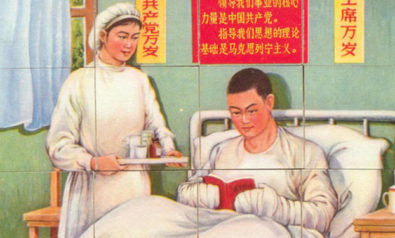Both China and the United States are undertaking reforms of their healthcare systems.
Background
The United States spends significantly more on healthcare than other developed nations – both on a per-capita basis and as a percentage of GDP. Yet, it lags behind other countries in such indicators as infant mortality and life expectancy. Although it is the only wealthy industrialized nation in the world that lacks some form of universal health care, in terms of quality of service for individuals the American healthcare system remains second to none. Coverage and access are significant issues – according to the U.S. Census Bureau, some 16% of Americans are uninsured, and studies suggest that as many as 40% are underinsured and unprepared to pay for major medical expenses.
After a heated debate, Congress passed a regulatory reform bill of the health insurance system, which in March 2010 was signed into law by President Obama. As it will not be broadly implemented until 2014, it is unclear what the bill’s effect will be. Extending coverage of medical care will continue to be a political and fiscal challenge.
The recorded history of medical practice and theory in China is more than two thousand years old. Missionaries were among the first to bring Western science and medicine to East Asia in the 19th and 20th centuries. Since then Western medicine has been increasingly practiced alongside traditional Chinese medicine. After the People’s Republic of China was established in 1949, health policy based on mass mobilization campaigns did a great deal to improve sanitation, hygiene and disease prevention, especially in the countryside where modern medical care was previously unavailable or nearly nonexistent. The healthcare system was tiered, from rural village medical centers to county-level clinics and finally urban provincial- and municipal-level hospitals.
During the Cultural Revolution, political turmoil destabilized the healthcare system and weakened control of epidemic disease and malnutrition. In the 1980s, market reforms and de-collectivization had serious consequences for the rural collective health system. The percentage of rural population that had access to medical care dropped significantly.
In modern China, health insurance is still based on location, with rural- and county-level tiers receiving higher subsidies than urban centers. The collapse of the old collective healthcare system, however, has meant greater disparity in responsiveness and quality of care between rural and urban areas. In large cities such as Beijing and Shanghai, Western-style private hospitals and clinics with internationally-trained doctors are available but unaffordable to the majority of Chinese. Limitations on the salaries of doctors have led to endemic corruption.
Additionally, the relatively low cost of generic drugs compared to high-quality professional medical attention has made overconsumption of medicine especially prevalent, increasing the risk of drug-resistant diseases. Emerging public health problems include pollution-related conditions, hundreds of millions of cigarette smokers, increasing obesity, and the HIV-AIDS epidemic, among others.
Why is healthcare reform in the US and China relevant?
Although China has been developing rapidly for the past 30 years, it still faces huge obstacles to providing affordable healthcare to its vast population, especially in rural areas. Reforming the public healthcare system is an important part of maintaining domestic stability, which is of paramount importance to the Chinese Communist Party’s legitimacy. The leadership also recognizes that as China seeks to attain world power status, it must find ways to transform economic growth into human and social development – a key measure of which will be the health of its society. Lightening the financial load of medical expenses for individuals and families will also boost domestic consumption rates.
Together with various UN agencies and the World Health Organization, the Ministry of Health has done much to strengthen public health, but China must work hard to present itself as a responsible partner when dealing with global health issues, including the threat of infectious diseases such as avian influenza and SARS.
In the United States, health insurance reform has been one of the most contentious issues in recent years. Since the US is the wealthiest nation in the world, the inability to provide affordable healthcare to a large segment of its population presents a major contradiction. Especially during times of economic downturn, a costly and ineffective public health system can be a huge financial burden.
The real and perceived results of healthcare reforms will likely have implications for this year’s presidential election, and remain central to domestic politics for many years to come. An important part of the US global image is its position as a provider of public goods, including healthcare and medical supplies in developing countries, but if it cannot deliver the goods at home, its advantage in this area and its moral authority in general may fall into decline.
The views expressed in this article are the author’s own and do not necessarily reflect Fair Observer’s editorial policy.
Photo Credit: janews / Shutterstock.com
For more than 10 years, Fair Observer has been free, fair and independent. No billionaire owns us, no advertisers control us. We are a reader-supported nonprofit. Unlike many other publications, we keep our content free for readers regardless of where they live or whether they can afford to pay. We have no paywalls and no ads.
In the post-truth era of fake news, echo chambers and filter bubbles, we publish a plurality of perspectives from around the world. Anyone can publish with us, but everyone goes through a rigorous editorial process. So, you get fact-checked, well-reasoned content instead of noise.
We publish 2,500+ voices from 90+ countries. We also conduct education and training programs on subjects ranging from digital media and journalism to writing and critical thinking. This doesn’t come cheap. Servers, editors, trainers and web developers cost money.
Please consider supporting us on a regular basis as a recurring donor or a sustaining member.
Support Fair Observer
We rely on your support for our independence, diversity and quality.
Will you support FO’s journalism?
We rely on your support for our independence, diversity and quality.









